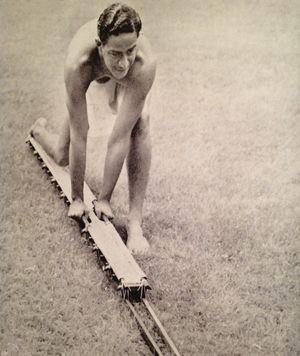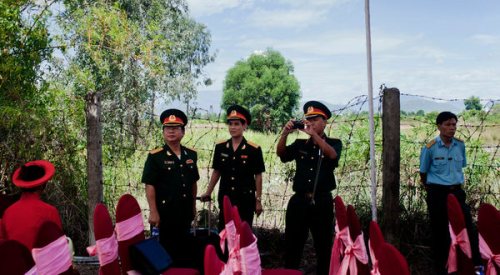Suzette Brewer, ICTMN
It was the end of a long, bizarre week in which the ongoing battle between Dusten Brown and Matt and Melanie Capobianco became even more contentious with accusations of bad faith, court orders and competing media interviews, capped off by the dramatic issuance of a felony arrest warrant. Late Friday night, as word of the warrant began gaining traction, Lori Alvino McGill, attorney for Veronica’s birth mother, went on the Facebook page Standing Our Ground for Veronica Brown to argue with supporters for the Brown family.
In heated exchanges laced with name-calling and bad spelling, Ms. McGill again publicly excoriated Dusten Brown and vociferously defended her client’s actions in turning her infant daughter over to Matt and Melanie Capobianco in September 2009.
“…Y’all should ask Dusten aka Dustin why his name is spelled ‘Dustin Dale Brown’ on a public court order requiring him to pay delinquent child support to yet another woman, for yet another illegimate [sic] child that he spawned,” she wrote. “The fact is that every court to have looked at this case has rejected the idea that Dusten was trying to do the right thing but was misled by his pregnant girlfriend….”
“And, FYI, absentee impregnanters [sic] are not entitled,” she later posted, “to information about the childcare plans made by the women whom they have knocked up. This has been the law for decades.”
A return to the facts. The only two children Dusten Brown has, according to his ex-wife, Rachel Reichert, is Kelsey Brown, who was born two years after they were married in 2001, and Veronica, whose biological mother was Brown’s ex-fiance. And it is a matter of court record that, in spite of the recent rulings against Dusten Brown, her client, Christy Maldonado, was never found to be credible in any of the court proceedings in South Carolina.
“It is rather unseemly for an officer of the court to be on Facebook at that hour—or any hour—arguing the facts on behalf of her ‘client’ who is not a party in this case,” observed a Washington, D.C.-based lawyer who works on Capitol Hill. “The serious practicing attorneys I know would never bother with that kind of thing. It’s just not appropriate. But it is pure comic gold. You can’t make this stuff up.”
Humor aside, the recent emergence of McGill as “a voice” for Veronica’s birth mother, who has never spoken publicly save for a heavily-edited opinion piece for the Washington Post in June to advocate for the Capobiancos, has begun to raise questions about Maldonado herself. Over the years, Brown has never gone on the record about his ex-fiance and has never publicly spoken ill of his daughter’s biological mother.
But a review of court documents in Oklahoma and in interviews with those who knew Maldonado prior to and during her engagement and pregnancy with Dusten Brown, reveal a portrait of a woman with a history of turmoil in her relationships, featuring restraining orders, lawsuits, Court Appointed Special Advocates and ongoing custody and child support disputes with her two older childrens’ father.
“All along, she has been painted by the adoption team as this saintly, Thomas Kinkade-hued single mother who was raising two kids and selflessly gave her child to an infertile couple,” says a former friend. “That’s been the narrative. But the reality is that it’s common knowledge in Bartlesville that Christy Maldonado does not have custody of her two other kids. They are living with their paternal grandmother in Oklahoma. She’s actually the one who pays child support and has visitation.”
Additionally, Indian Country Today Media Network has learned that Maldonado did not, in fact, receive any compensation for birth expenses from the Capobiancos. The birth of Veronica came at the expense of the taxpayers of the State of Oklahoma via the state’s Medicaid program, SoonerCare.
In 2008, the year that she became pregnant with Veronica, Maldonado claimed copy,800 a month in income on a child support worksheet and had been working as a cashier at one of the Osage Nation casinos at the time of her pregnancy. As a full-time employee, she would have had access to health insurance through the tribe; or, alternatively, because Dusten Brown is a tribal member, she could also have received maternal health care at one of Oklahoma’s tribal Indian Health Service facilities. Brown even encouraged her to have their baby at a military health facility.
Adoption attorneys also point out that many health plans provide for adoptive couples in covering the medical expenses for the birth mother and child, so the Capobiancos could have also used their own health insurance to help pay some of the costs for prenatal care, labor and delivery.
But, shortly after she became pregnant, Maldonado disappeared and declined any contact with Brown or his parents, all of whom testified in court that they had tried numerous times to reach out to help her, despite her claims to the contrary.
Maldonado had battled her ex-common law husband, Joshua Thompson, in court since their divorce in 2006, which was filed by Thompson as the petitioner. Since that time, the two have fought over custody and child support too many times to count.
In 2008, she reconnected with Dusten Brown though she had stayed with him off and on since her separation from Thompson, according to former friends. Although she was working, Maldonado was behind on her mortgage and other bills; she had been through yet another expensive, bruising legal battle with her ex, and she had been ordered to pay him $252 a month in child support and 63 percent of their children’s medical expenses.
Brown, who had known Maldonado since they were both in high school, offered to help her get out of debt. In an interview last March, Brown told Indian Country Today Media Network that he knew she was stressed about money and said that he had saved about $7,500 and had offered to give all of it to her to pull out of her financial downward spiral. But she refused.
“She told me she ‘had a plan,’” he said at the time. “But I didn’t know that the plan was to put Veronica up for adoption. I offered to give her everything I had, but she didn’t want it.”
Later, in 2009, friends noticed that the old Honda Civic that Maldonado had been driving courtesy of a family member who was making her car payments for her, was suddenly traded in for a large SUV that she began driving around Bartlesville. Additionally, she had mysteriously regained her financial equilibrium and was able to get caught up on her mortgage.
“Christy Maldonado is a piece of work,” said one insider. “Dusten’s life in the military requires a lot of responsibility and time away from families and it comes with a lot of strings. She couldn’t handle that and took it personally, like he was blowing her off. But he was working and she didn’t like the demands of his job. So when she got pregnant, she had no intention of keeping the baby because the reality is that she didn’t want to pay more child support and fight over another kid. And he blindly believed that she would never do something like this. But the irony is that here she is fighting over another kid and would rather seem him go to jail than have custody of Veronica.”
In court testimony, Matt Capobianco admitted on the stand in South Carolina that he and his wife had given Maldonado money, which accounts for the record time in which Maldonado pulled out of her financial chaos. Under Oklahoma law, however, there is a copy,000 limit to what birth mothers can be paid. Any more than that requires court approval, according to an Oklahoma adoption attorney. Those in the adoption industry say the state limit is often ignored when a desperate couple is seeking the assistance and cooperation of a birth mother who may be in financial straights.
The Capobiancos also testified that they paid for Maldonado’s attorney fees and bought Christmas gifts for her and her two other children in 2009, as well as covering her airfare and expenses to travel to and from court hearings in South Carolina for trial. On the stand, Melanie Capobianco said that she and her husband had spent between “$30,000 to $40,000” for Veronica’s adoption. But those expenses are now two years out of date, though no formal audit has ever taken place regarding the expenditures and receivables on either side. It is widely acknowledged, however, that the appellate and Supreme Court practitioners and their staffs worked pro bono for both parties in Adoptive Couple.
Additionally, it is unclear whether Maldonado claimed any of the funds or gifts she received from the Capobiancos or any of their supporters in the last four years as income, which may be taxable under IRS laws.
Last month, Maldonado, with a group of nine other women, filed a federal lawsuit in South Carolina seeking to overturn the Indian Child Welfare Act because of its “race-based” placement preferences. The litigation could have profound negative outcomes for Indian tribes across the country, including the Osage, from whom Maldonado has also benefited as an employee.
Officials for the Osage Nation of Oklahoma could not be reached for comment regarding Ms. Maldonado’s extracurricular activities in filing anti-Indian litigation with far-reaching consequences.
For Maldonado, however, there is one bright spot.
McGill, in her midnight chat with Brown’s supporters on Facebook, helpfully pointed out the she is working pro bono on Maldonado’s behalf.
Read more at https://indiancountrytodaymedianetwork.com/2013/08/12/selling-christy-maldonado-150831













































